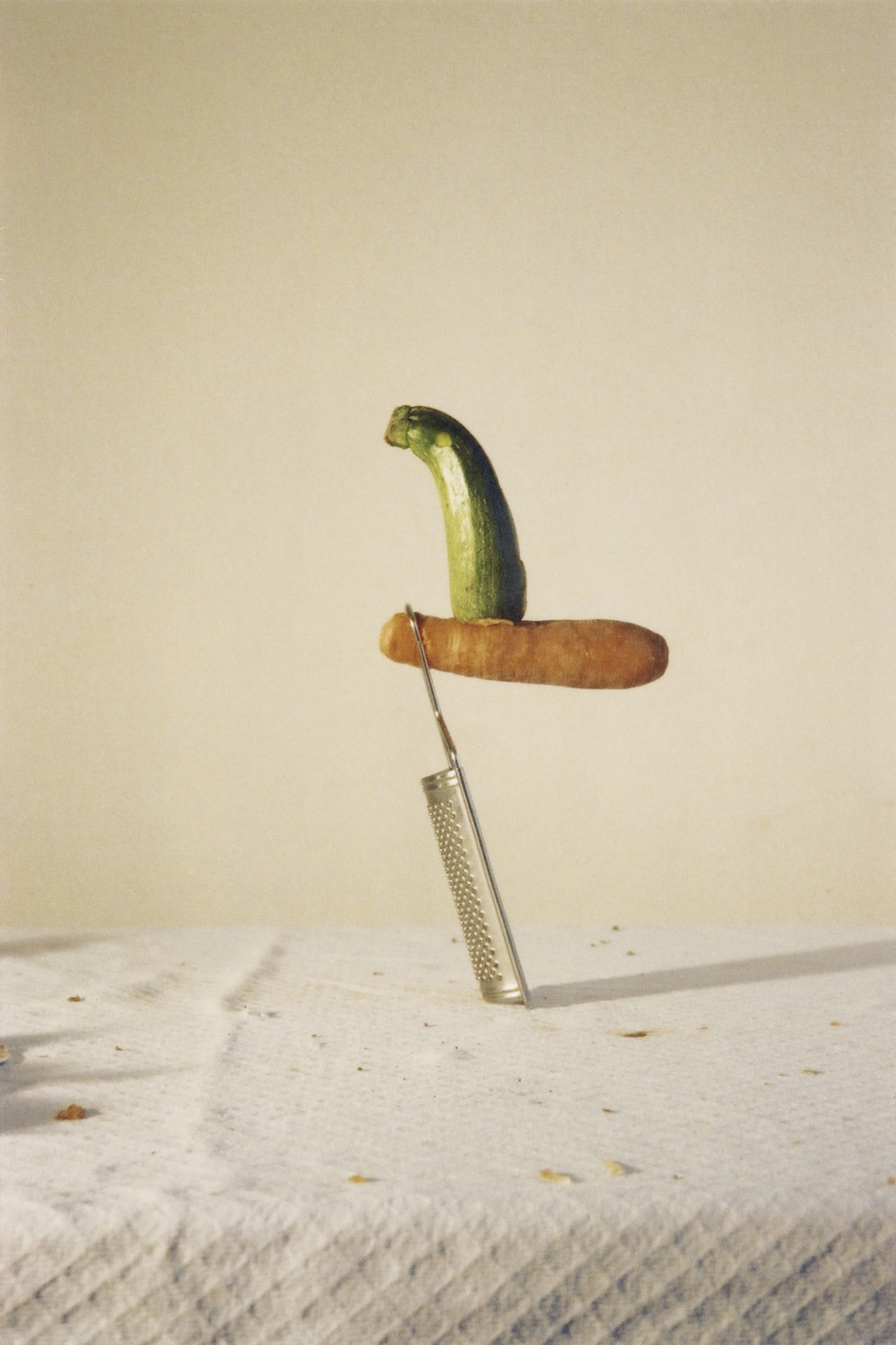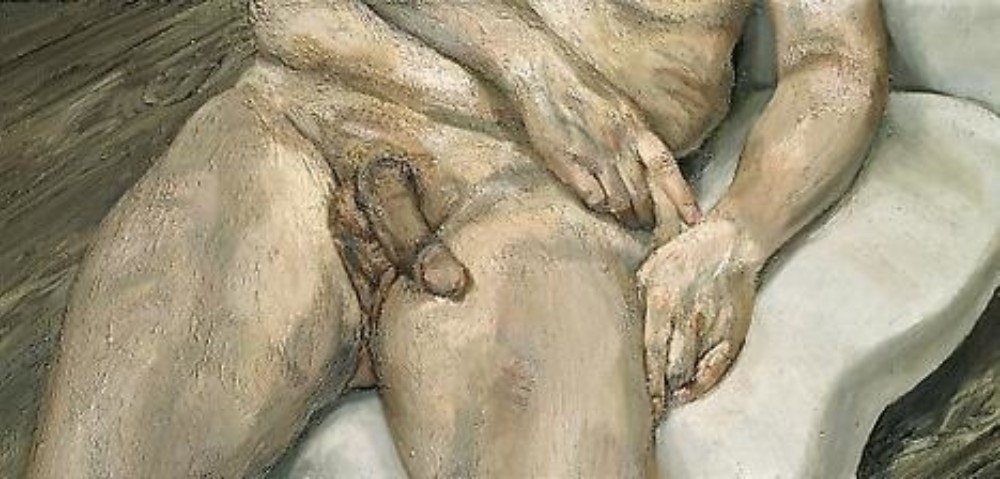Peter Fischli David Weiss

For more than thirty years Peter Fischli and David Weiss collaborated on a body of work that combines, rearranges, or otherwise manipulates the mundane into something new and unexpected. Executed in a variety of media, including unfired clay, carved and painted polyurethane, photography, and video, their work playfully ignores the distinction between art and everything else. The duo is perhaps best known for their 1987 film The Way Things Go, in which a Rube Goldberg-like chain of events starring household objects and detritus unfolds in their studio, transforming these humble materials into something remarkable.
In their first collaborative work, Wursterie (Sausage Series, 1979), Fischli and Weiss transformed a bathroom shelf into a runway for fashionably attired sausages, and an unmade bed into an Alpine landscape. For Polyurethane Objects, begun in 1982, they used the same material Hollywood propmakers do to make meticulously carved and painted replicas of ordinary objects (a paint roller, a bottle of bleach, a few stray M&Ms, a cardboard box). Visible World (1986–2012) is a quasi-encyclopedic view of natural and built landscapes, from the commonplace to the extraordinary, made up of thousands of photographs made around the world by Fischli and Weiss over twenty-five years of travel.
The work of Peter Fischli (b. 1952) and David Weiss (1946–2012) has been the subject of large-scale surveys at numerous museums across Europe and North America, most recently in 2016 at the Solomon R. Guggenheim Museum in New York and the Museo Jumex in Mexico City. Their work has been featured in Documenta, Skulptur Projekte Münster, and six Venice Biennales, where they represented Switzerland in 1995 and were awarded the Golden Lion in 2003 for their installation Questions (1981–2002). Peter Fischli lives and works in Zurich.
Selected Works

Modeschau (Fashion Show) 1979
From the series Wurstserie
C-print
Flirt, Liebe, Leidenschaft, Hass, Trennung (Flirtation, Love, Passion, Hate, Separation) 1985
From the series Equilibres
Gelatin silver print
Animal 1986
Hand-carved and painted polyurethane, cloth
Root 1986–88
Cast rubber
Airport (Sydney - Qantas) 1990
C-print
Projection 2 (Summer) 1997
162 color slides, 2 slide projectors, 1 dissolve machine, wooden stand designed by artists
Busi (Kitty) 2001
Video (color, silent)
Questions 1981/2002–03
1215 slides, 15 slide projectors, 15 lenses, 8 dissolve units
Untitled (Rat and Bear, Sleeping) 2008/09
Cotton, wire, polyester, electrical mechanism
Exhibitions

PETER FISCHLI DAVID WEISS
Polyurethane Objects
September 13–October 26, 2024
522 West 22nd Street
New York

DAVID WEISS
Metamorphoses
January 22–March 5, 2022
526 West 22nd Street & Online
New York & Online

DAVID WEISS
Drawings
February 9–April 6, 2019
523 West 24th Street
New York

PETER FISCHLI DAVID WEISS
Polyurethane Objects
January 18–April 12, 2014
1062 North Orange Grove
7818 Santa Monica Boulevard
Los Angeles

PETER FISCHLI DAVID WEISS
Clay and Rubber
October 29, 2009–January 16, 2010
523 West 24th Street
New York

PETER FISCHLI DAVID WEISS
Sun, Moon and Stars
October 29, 2009–January 16, 2010
522 West 22nd Street
New York

PETER FISCHLI DAVID WEISS
Sleeping Puppets
October 29, 2009–January 16, 2010
526 West 22nd Street
New York

PETER FISCHLI DAVID WEISS
Equilibres
April 27–June 30, 2007
523 West 24th Street
New York

PETER FISCHLI DAVID WEISS
Rat and Bear, Fotografias
March 11–April 22, 2006
526 West 22nd Street
523 West 24th Street
New York

PETER FISCHLI DAVID WEISS
Hunde (Dogs)
November 8–December 6, 2003
529 West 21st Street
New York

PETER FISCHLI DAVID WEISS
February 22–April 20, 2002
522 West 22nd Street
New York

PETER FISCHLI DAVID WEISS
Büsi (Kitty)
April 21–May 19, 2001
523 West 24th Street
New York

PETER FISCHLI DAVID WEISS
February 6–March 20, 1999
522 West 22nd Street
New York
Group Exhibitions

HOME LIFE
January 29–March 27, 2021
523 West 24th Street
New York

TRISHA DONNELLY, VINCENT FECTEAU, PETER FISCHLI DAVID WEISS, NAN GOLDIN, MARTIN HONERT, MICHEL MAJERUS, PAUL SIETSEMA, REBECCA WARREN
September 8–October 21, 2017
522 West 22nd Street
526 West 22nd Street
New York

SUMMER GROUP EXHIBITION
July 19–August 16, 2014
1062 North Orange Grove
7818 Santa Monica Boulevard
Los Angeles

PETER FISCHLI DAVID WEISS, KATHARINA FRITSCH, MARTIN HONERT, GARY HUME
July 10–August 14, 2014
523 West 24th Street
New York

SMALL SCULPTURE
September 23–October 28, 2006
523 West 24th Street
New York

SCULPTURE
Darren Almond, Peter Fischli David Weiss, Katharina Fritsch, Robert Gober, Donald Judd, Ellsworth Kelly, Ugo Rondinone, Tony Smith
September 20–November 1, 2003
522 West 22nd Street
New York

SOMETHING ANYTHING
An exhibition curated by Nayland Blake
July 2–August 16, 2002
522 West 22nd Street
New York

100 DRAWINGS AND PHOTOGRAPHS
Tenth Anniversary Exhibition
November 3–December 22, 2001
523 West 24th Street
New York

WILLEM DE KOONING, PETER FISCHLI DAVID WEISS, LUCIAN FREUD, KATHARINA FRITSCH, RONI HORN, ELLSWORTH KELLY, BRICE MARDEN
September 25–November 27, 1999
522 West 22nd Street
New York

MAVERICK
Jean-Marc Bustamante, Peter Fischli David Weiss, Katharina Fritsch, Roni Horn, Thomas Schütte, Andreas Slominski







